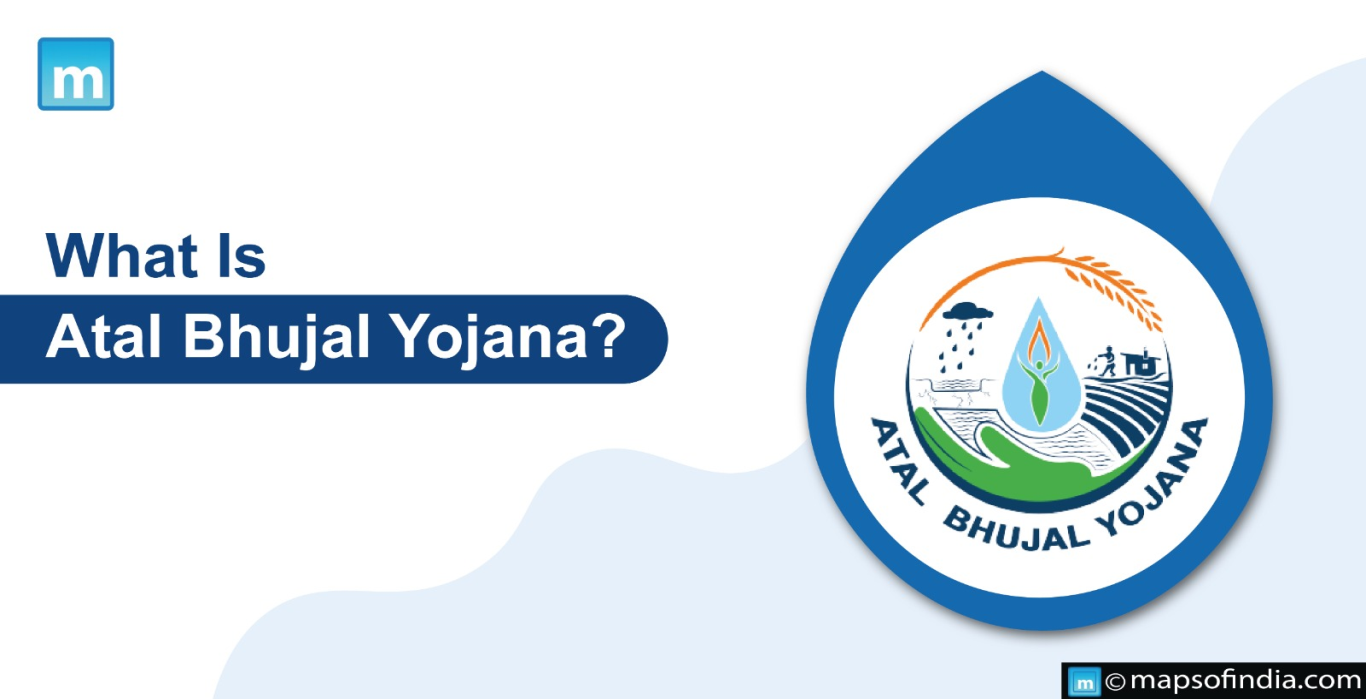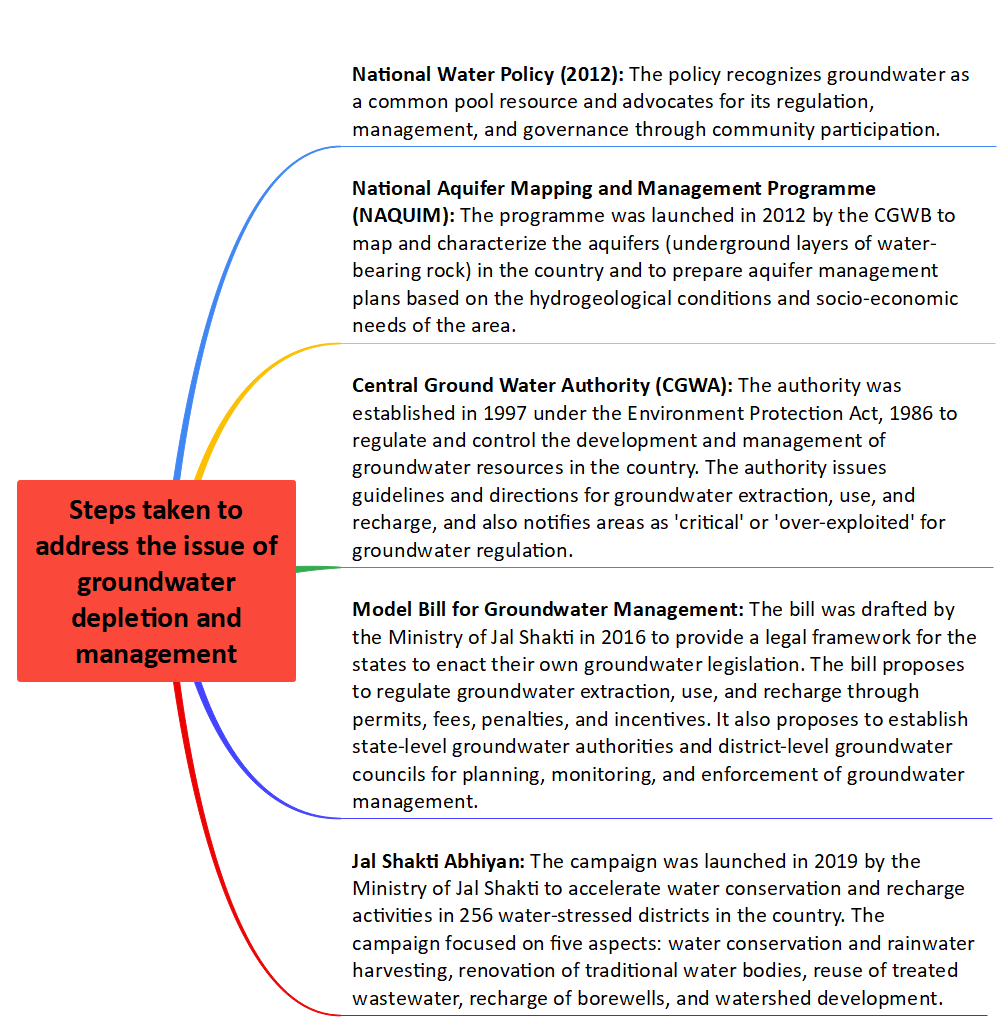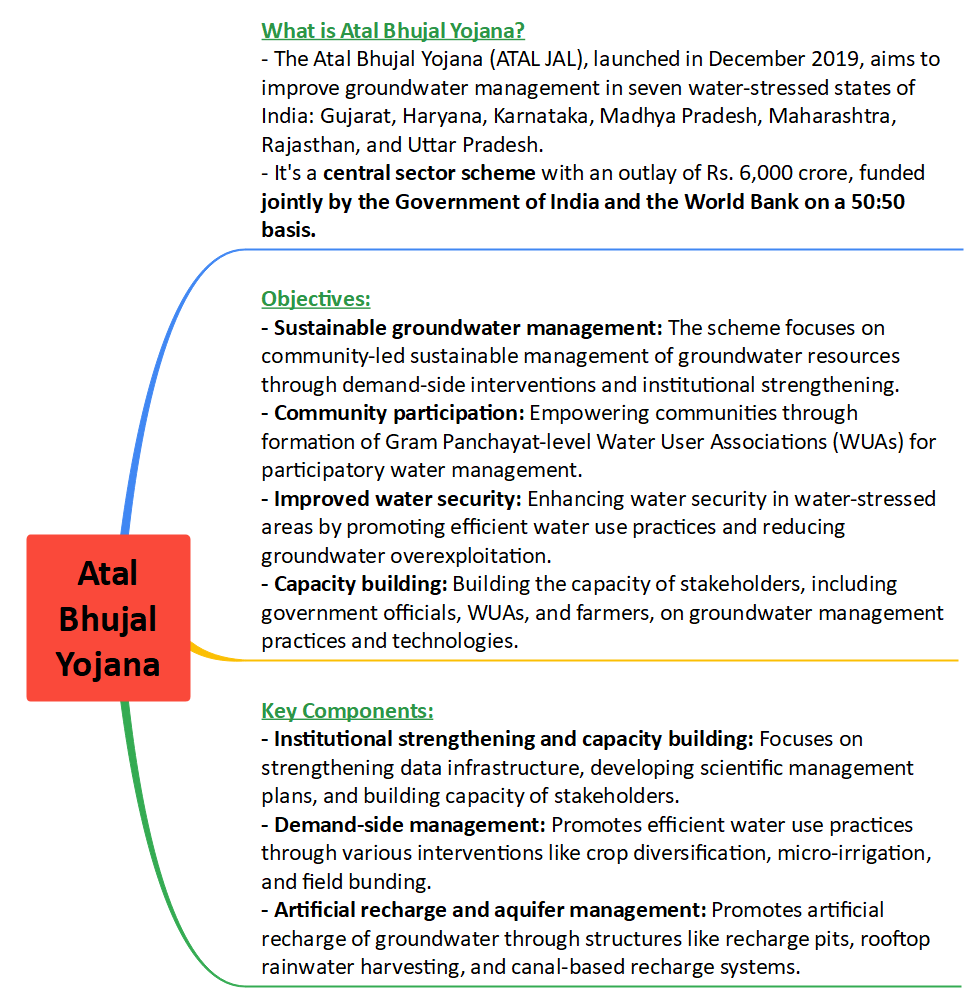Description

Copyright infringement not intended
Picture Courtesy: www.mapsofindia.com
Context: The 5th Meeting of the Steering Committee of Atal Bhujal Yojana (ABHY) was held recently under the chairmanship of the Secretary, Ministry of Jal Shakti.
Details
- The meeting was attended by representatives from the World Bank, NITI Aayog, Central Ground Water Board, National Remote Sensing Centre, and the participating states of Gujarat, Haryana, Karnataka, Madhya Pradesh, Maharashtra, Rajasthan and Uttar Pradesh.
- The meeting discussed the achievements and challenges of the Atal Bhujal Yojana in various aspects such as groundwater monitoring, data dissemination, capacity building, awareness generation, water budgeting, water conservation and recharge measures, crop diversification, and convergence with other schemes.

Atal Bhujal Yojana
- Groundwater is a vital resource for India, as it provides nearly 63% of irrigation water and 85% of drinking water. However, due to over-exploitation, climate change, and pollution, groundwater levels are declining rapidly in many parts of the country, posing a serious threat to water security, food security, and livelihoods of millions of people.
- To address the challenges, the Government of India launched the Atal Bhujal Yojana (ATAL JAL) in December 2019, on the occasion of the 95th birth anniversary of former Prime Minister Atal Bihari Vajpayee.
- ATAL JAL is a central sector scheme with an outlay of Rs. 6000 crore, of which Rs. 3000 crore is a loan from the World Bank and Rs. 3000 crore is a matching contribution from the Government of India.
- ATAL JAL aims to improve groundwater management in seven states that have high to very high groundwater exploitation and are home to more than 25% of India's population. These states are Gujarat, Haryana, Karnataka, Madhya Pradesh, Maharashtra, Rajasthan, and Uttar Pradesh.
Background
- The need for a scheme like ATAL JAL was felt after several studies and reports highlighted the alarming situation of groundwater depletion in India. According to a report by NITI Aayog in 2018, 21 major cities in India are expected to run out of groundwater by 2020, affecting nearly 100 million people. The report also stated that 40% of India's population will have no access to drinking water by 2030.
|
Main reasons for groundwater overexploitation
●Increasing demand for water from agriculture, domestic, and industrial sectors.
●Lack of regulation and monitoring of groundwater extraction.
●Inadequate recharge of groundwater due to low rainfall, poor soil health, and reduced forest cover.
●Lack of awareness and participation among stakeholders about the importance and benefits of groundwater conservation.
|
Key features of the scheme
- Community-led participatory approach: It involves people's participation through the formation of Water User Associations (WUAs), water budgeting, preparation and implementation of gram panchayat-wise water security plans, and information, education and communication (IEC) activities.
- Demand-side interventions: It promotes efficient water use practices such as micro-irrigation, crop diversification, rainwater harvesting, artificial recharge, and reuse of treated wastewater.
- Convergence with other schemes: It leverages funds and resources from other central and state schemes such as Jal Jeevan Mission, Pradhan Mantri Krishi Sinchayee Yojana (PMKSY), MGNREGA, Swachh Bharat Mission (SBM), etc.
- Data-driven decision-making: It strengthens the database and scientific approach for groundwater management by using advanced technologies such as remote sensing, GIS mapping, geophysical surveys, etc.
- Incentive-based funding: It provides funds to the states as grants-in-aid based on their performance in achieving pre-defined results or Disbursement Linked Indicators (DLIs). The five DLIs are:
- Public disclosure of groundwater data/information and reports.
- Preparation of community-led water security plans.
- Public financing of interventions through convergence of ongoing schemes.
- Adoption of practices for efficient water use.
- Improvement in the rate of decline of groundwater levels.
Expected outcomes
- Improved groundwater quantity and quality
- Enhanced source sustainability for Jal Jeevan Mission
- Increased agricultural productivity and income
- Reduced vulnerability to droughts and floods
- Improved health and sanitation
- Increased awareness and ownership among communities
- Strengthened institutional capacity and governance

Challenges
- Lack of reliable and updated data on groundwater availability, quality, and use.
- Lack of coordination and convergence among various departments and agencies involved in groundwater management.
- Lack of enforcement and compliance of the existing rules and regulations for groundwater extraction, use, and recharge.
- Lack of awareness and participation among stakeholders about the importance and benefits of groundwater conservation.
- Lack of financial and technical resources and capacity for implementing groundwater management interventions.
- Lack of political will and commitment to address the issue of groundwater depletion
Way forward
- Strengthening the database and scientific approach for groundwater management by using advanced technologies such as remote sensing, GIS mapping, geophysical surveys, etc.
- Enhancing the coordination and convergence among various departments and agencies involved in groundwater management.
- Strengthening the enforcement and compliance of the existing rules and regulations for groundwater extraction, use, and recharge.
- Increasing the awareness and participation among stakeholders about the importance and benefits of groundwater conservation.
- Mobilizing financial and technical resources and capacity for implementing groundwater management interventions.
- Building political will and commitment to address the issue of groundwater depletion
Conclusion
- The Atal Bhujal Yojana is a promising initiative towards sustainable groundwater management in India. Its focus on community participation, demand-side management, and institutional strengthening holds the potential for long-term impact. Addressing challenges like ensuring sustained community participation, affordability of technologies, and financial sustainability will be key to the scheme's success.

Must Read Articles:
ATAL BHUJAL YOJNA: https://www.iasgyan.in/daily-current-affairs/atal-bhujal-yojna
|
PRACTICE QUESTION
Q. Climate variability and extreme weather events significantly impact groundwater recharge and availability. How can groundwater management strategies be adapted to these changing conditions and future uncertainties?
|











